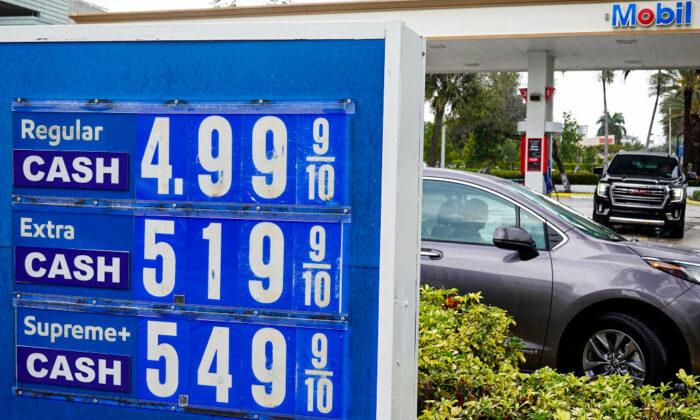The price of oil tumbled more than 7 percent on March 15 to its lowest level three weeks, despite supply disruptions caused by the conflict in Ukraine and surging COVID-19 cases in China.
The steep decline followed after supply disruption fears eased when Russia’s Foreign Minister Sergei Lavrov stated that Moscow is in favor of resuming the 2015 Iran nuclear deal as soon as possible.
Speculators are hopeful that a revision of the Iranian nuclear deal, backed by Russia, would lead to Iranian oil sanctions being lifted and allow Tehran to resume crude exports.
On March 15, a Ukrainian negotiator said that talks with Russia for a ceasefire and a possible end to the war had resumed and are still ongoing.
The war in Ukraine has led to rising commodity prices, which have further exasperated global inflation and disrupted trade flows and transportation logistics, partially offsetting the gradual easing of global supply chain bottlenecks.Meanwhile, EU and G7 sanctions against Russia have failed to deter China and India from buying Russian crude.
China has been witnessing a jump in daily COVID infections, with entire towns facing lockdowns adding further pressure on prices as the world economy recovers from the initial outbreak in 2020.
The nation’s daily oil processing rate dropped 1.1 percent in the first two months of the year from 2021, to the lowest since December 2020, as independent refiners scaled back operations after the CCP slashed their crude oil import quotas.
OPEC and its allies, collectively known as OPEC+, announced on March 15, that its view on demand and growth remained unchanged and spare crude oil production capacity remains limited.“However, this forecast is subject to change in the coming weeks, when there is more clarity on the far-reaching impact of the geopolitical turmoil,” said OPEC.
The cartel warned however, that the Russian war in Ukraine and rising inflation could impact oil consumption growth this year, increasing the chance that it will reduce its forecast for robust demand this year.
“The effects of the conflict and especially the impact of rising inflation, if sustained, will lead to a decline in consumption and investments to varying degrees,” said OPEC.
OPEC+ still expects global oil demand to exceed pre-pandemic levels on average this year, and has even raised the full-year oil demand estimate to 100.9 million bpd from 100.8 million bpd in last month’s report, which boosted demand for Q4 2022 to 103.24 million bpd from the 102.92 million bpd expected in February.
Despite its slightly higher estimate for global oil demand, OPEC has stated that “it is clear that uncertainty will dominate in the remaining months of 2022.”
“Given this unprecedented level of uncertainty, the forecast for total global oil demand growth for 2022 also remains under assessment at 4.2 mb/d, until more clarity prevails,” said the statement.
Brent futures fell $7.89, or 7.4 percent, to $99.01 a barrel by 11:51 a.m. EST, while U.S. West Texas Intermediate crude dropped $8.11, or 7.9 percent, to $94.90 a barrel.
The two oil futures were at overbought conditions from December through early March, when their benchmarks reached 14-year highs after Russia’s invasion of Ukraine.
Since then, Brent has lost about $40 and WTI has fallen by more than $30.
The U.S. Federal Reserve is widely expected to raise interest rates by 25 basis points on March 16 for the first time in four years to fight soaring inflation.
It is hoped that the Fed’s move would slow down rising prices and dampen demand for commodities.
Meanwhile, Sarah Bloom Raskin, President Biden’s nominee to be vice chair for supervision at the Federal Reserve, withdrew her candidacy after facing opposition in the U.S. Senate.





Friends Read Free